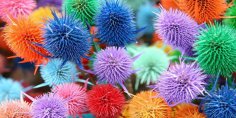
One of the areas of behavioral psychology is color psychology, which reveals the secrets of the influence of different colors on our perception and actions.
Color has a powerful influence on human emotions and attitudes. A complex process occurs in the brain, beginning with the eyes' perception of color and ultimately triggering mood and emotional fluctuations. More and more studies are proving that color often plays a decisive role in decision making. For example, research by S. Singh shows that a buyer forms an opinion about a product in just 90 seconds, with 62-90% of this interaction determined by color alone.
This article explores the role of color in web design. The chosen color schemes guide the website's graphics, backgrounds, headings, borders, buttons, and pop-ups. Of particular note is the choice of the Call-To-Action button's design, which should motivate action largely through its color, making it stand out from the website's background. Photographs are increasingly being used in web design with color overlay filters (colored “lenses”), which allow any image to be enhanced with the emotional attributes of the chosen color.
Visual design, and color choice in particular, shouldn't be solely driven by aesthetics. In today's world, it's not enough for a website to look good; its visual design must support the business's goals and, therefore, motivate customers to engage in specific behavior. To achieve this, web designers and marketers employ a variety of approaches and tools.
Let's begin by considering why choosing a website color scheme is especially relevant today. Bright, saturated colors have become increasingly popular. This trend is spreading across various business sectors, including news websites and industrial sites, for which traditional color schemes have already been established. Two important factors are driving this change: improvements in display resolutions and color rendition, and the growing popularity of flat design. New technologies have significantly expanded the range of colors available, allowing for a more in-depth and accurate analysis of human color perception. Flat and material design emphasize the use of vibrant colors.
To select the most appropriate color scheme, designers draw on color psychology, which reveals the emotional and semantic components of color, and the color wheel, which shows the relationships between different colors. Existing trends and established color schemes for a given industry are also taken into account. The decisive factors are the stated goal, the specifics of the business, and its audience.
How different colors work
Let's take a closer look at how some colors “work,” what situations they are most suitable for, and which have limitations when used.
Blue
This color is often used in web design due to the emotions it evokes. Blue expresses trust, order, and evokes feelings of calm and serenity. It's often used by large companies that value transparency and trust, such as Facebook and PayPal. However, this color has a limitation: it shouldn't be used in the food industry, as few foods of this color are found in nature, and blue is sometimes associated with poison.
Red
This color is associated with danger, passion, fire, beauty, happiness, and anger. Red evokes strong emotions, which is why we see it frequently used in media website design. There are many different shades of this color, but it's difficult to associate specific feelings and moods with any particular hue. Red can be one of the most vibrant colors, a symbol of happiness, but it can also be the most aggressive. The difficulty in finding the balance between these conflicting associations sometimes forces designers to avoid using this color.
Yellow
This color also has contradictory associations. On the one hand, yellow is a warning color, attracting attention. It's no coincidence that we often see various yellow warning signs in our environment. Therefore, it's best not to use this color in large quantities, as this can cause unnecessary anxiety. On the other hand, yellow is associated with joy and happiness. This can be explained by the fact that yellow has a certain effect on our brain, causing our emotions and reactions to intensify, and sometimes we can mistake these feelings for joy. Color perception is also linked to our previous experiences, so yellow can evoke feelings of joy due to associations from our memory (for example, some people often rejoice at the sight of the sun).
Green
Green is the color of nature, making it ideal for websites dedicated to eco-friendly, natural products. Green can also play a significant role in calls to action, especially when it stands out from the website's overall background.
Orange
This color is associated with impulsiveness, energy, activity, competition, and fun. It is most often found in the visual imagery of sports teams and children's products. Orange is used for messages that require attention due to their relevance and timeliness, as Amazon does. However, caution should be exercised with this color, as in some situations it can be associated with cheapness.
Black
This color, on the other hand, is associated with luxury brands, expressing elegance, power, and luxury. Its combination with other colors can add a mystical touch. However, it's important to understand that for certain product categories, too much black can be problematic.
White
The generous use of white on a website can create a sense of spaciousness and freedom. White space is an important design element and is widely used in popular flat and material design.
When choosing a color for a call to action, it is better to focus on bright colors (primary and secondary), such as red, yellow, green, orange, as they tend to have higher conversion rates than dark colors.
Features of color scheme depending on the audience
As mentioned earlier, color choice largely depends on the audience. This primarily concerns audience gender.
There's a stereotype that most women love pink. In fact, despite pink being associated with tenderness in color psychology, it's a favorite color for a small percentage of women. Among the most frequently mentioned disliked colors are orange, brown, and gray. To improve the appeal of a website aimed at a female audience, it's recommended to use blue, purple, and green, as these are the colors women cite as their favorites.
Men dislike purple, orange, and brown, so they should be avoided in a website design aimed at a male audience. Instead, use blue, green, and black, which are traditionally associated with masculinity.
When choosing a color scheme, in addition to segmenting audiences by gender, it's also possible to segment customers by their behavior patterns. For example, orange, black, and blue are most attractive to impulse-buying shoppers.
Restrictions
Existing theories, approaches to color selection, research results, or recommendations from renowned designers do not provide a universal solution. The success of any given solution depends largely on the specifics of the website and its target audience, for whom general rules do not always apply. Different cultures and values can lead to different perceptions of the same colors. Therefore, it is necessary to experiment and test different color schemes to determine what works best for your user. Also, keep in mind the differences in screen color rendering, so consider how your website will display on the most popular devices used by your audience.





